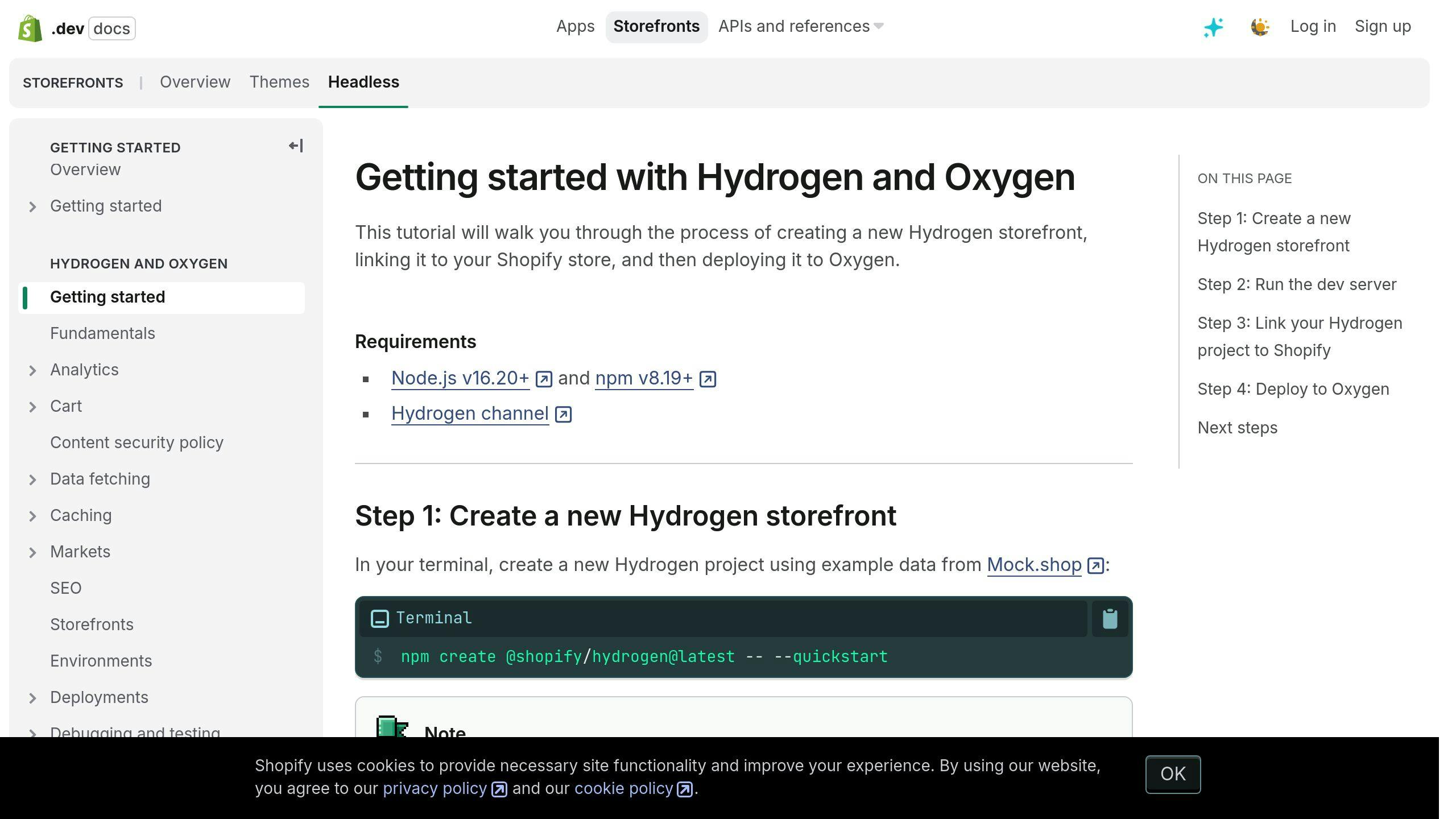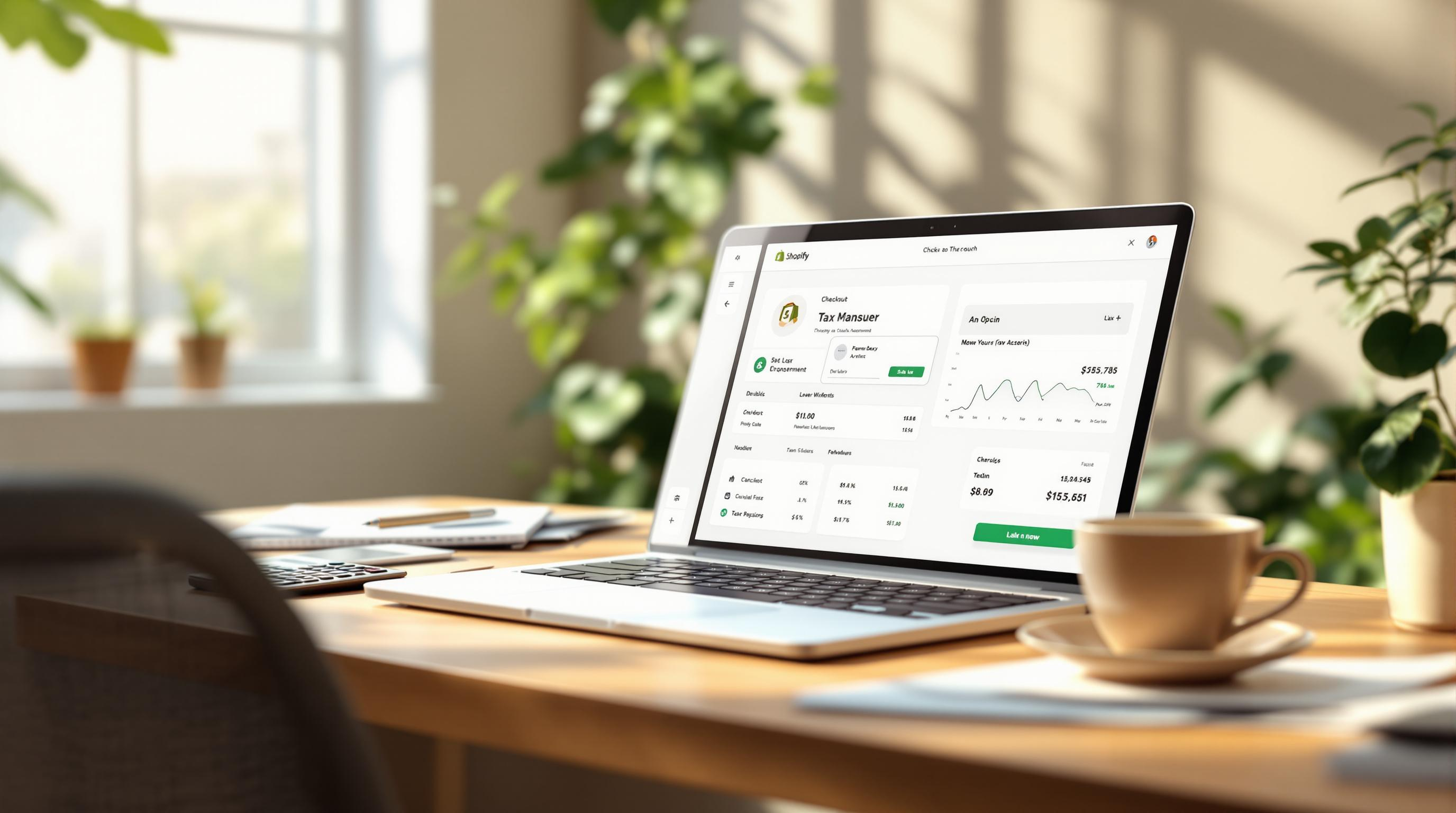By Mladen Terzic
Shopify Headless & Hydrogen
5th Jun 2025
6 min read
Hydrogen Framework: Custom Navigation Menus
Discover step-by-step how to implement fast, scalable navigation menus with Shopify’s Hydrogen framework, including setup, components, and performance tips.

Want to create fast, customizable navigation menus for your Shopify store? Shopify's Hydrogen framework allows developers to build dynamic, headless storefronts with ease. Here's what you need to know:
- What is Hydrogen? A React-based framework for building custom storefronts, seamlessly integrated with Shopify's backend.
- Why Custom Menus Matter: They improve user experience, simplify navigation, and can boost sales by making products easier to find.
- Key Tools: Use React.js, Shopify APIs, and Hydrogen components like
NavigationMenuto design menus tailored to your brand. - Shopify Plus Benefits: Higher API limits, advanced tools, and better performance optimization for large-scale headless stores.
Quick Steps to Build Menus
- Install Hydrogen:
npm install @shopify/hydrogen - Set up API credentials in
.env. - Use pre-built components like
NavigationMenuandAppLinkto create and customize menus. - Optimize with lazy loading, mobile-friendly designs, and performance tracking.
Hydrogen makes it simple to craft navigation menus that are fast, scalable, and user-friendly. Whether you're building basic menus or advanced mega menus, this framework has the tools you need.
Requirements for Building Custom Menus
Basics of Hydrogen Framework

To create custom navigation menus using Hydrogen, you'll need a solid grasp of React.js concepts like components, hooks, and state management. Additionally, being familiar with Shopify's GraphQL and REST APIs – especially the Admin API for handling navigation menus – is essential. Hydrogen simplifies the process with pre-built components like NavigationMenu, while still allowing for deep customization.
Here's a quick breakdown of the core technologies and their roles:
| Technology | Purpose | Key Components |
|---|---|---|
| React.js | Frontend Development | Components, Hooks, State Management |
| Shopify APIs | Data Management | GraphQL, REST APIs, Admin API |
| Hydrogen Framework | Store Architecture | NavigationMenu, AppLink Components |
Having a strong understanding of these tools is crucial. For even more advanced capabilities, Shopify Plus offers additional headless features that can elevate your navigation menus.
How Shopify Plus Supports Headless Development

Shopify Plus enhances headless development by providing higher API limits, advanced GraphQL features, and built-in tools to optimize performance. Combined with Hydrogen's flexibility, these features allow for the creation of highly customized and efficient navigation menus.
"Headless commerce gives you more control over buyer and developer experiences by decoupling back-end infrastructure from front-end touchpoints."
Key benefits of Shopify Plus for headless navigation include:
- Advanced API Access: Higher API limits, enabling faster and more frequent menu updates.
- Custom Storefront Tools: Tools designed to manage and fine-tune navigation structures.
- Performance Optimization: Features that ensure menus load quickly across all devices.
Using the Shopify Admin GraphQL API, developers can programmatically create, update, or delete menu items. This enables dynamic, data-driven navigation systems that adapt to user behavior and business needs [1][2].
Shopify Hydrogen Reactjs Tutorial: Custom Drop-down Menu Implementation

Steps to Build Custom Navigation Menus
With a solid understanding of Hydrogen and Shopify Plus, you can create custom navigation menus that align with your brand and improve the shopping experience.
Setting Up Hydrogen Framework
First, install Hydrogen and set up your project:
npm install @shopify/hydrogen
Then, create a new project and connect it to your Shopify store by adding your Storefront API credentials to the .env file:
SHOPIFY_STOREFRONT_API_TOKEN=your_token_here
SHOPIFY_STORE_DOMAIN=your-store.myshopify.com
Using the NavigationMenu Component
The NavigationMenu component lays the groundwork for dynamic menus in your storefront:
import { NavigationMenu } from '@shopify/app-bridge/actions';
const navigationMenu = NavigationMenu.create({
navigationLinks: [
{ label: 'Collections', destination: '/collections' },
{ label: 'Products', destination: '/products' }
]
});
This setup manages routing and state automatically, ensuring smooth navigation throughout your store.
Customizing Links and Menu Triggers
To enhance your menus, use the AppLink component for custom links:
import { AppLink } from '@shopify/app-bridge/actions';
const customLink = AppLink.create({
label: 'Featured Collections',
destination: '/collections/featured'
});
For advanced navigation features, consider these options:
- Add dropdown triggers to control submenu visibility.
- Define custom routes for specific paths.
- Highlight the current section with active states.
To improve performance, you can:
- Load submenu content only when necessary.
- Take advantage of Hydrogen's caching features.
- Use the Shopify Admin GraphQL API for dynamic updates.
Once your custom navigation menus are functional, focus on refining their design and performance to ensure a smooth and engaging user experience.
sbb-itb-6dc743d
Tips for Better Custom Menus
Hydrogen gives developers the tools to create menus that are both functional and aligned with a brand's identity. Here’s how to design navigation that works seamlessly for users:
Crafting Clear and Effective Menus
Use clear, descriptive labels to help users navigate quickly. Instead of vague terms like "Shop", opt for specific labels like "Men's Shoes" or "Kitchen Essentials." Organize your menu hierarchy logically. For larger catalogs, consider mega menus to display multiple levels of categories in a way that’s easy to scan.
Keep your primary navigation simple, with 5–7 main categories (like "Collections" or "New Arrivals"). Dropdown menus can include 3–5 secondary items (such as "Shirts" or "Accessories"), while tertiary links can group related products or topics.
To ensure smooth performance and usability, follow these tips:
-
Lazy Loading: Delay loading submenus to speed up the initial page load. For example:
const LazySubmenu = React.lazy(() => import('./Submenu')); -
Mobile-Friendly Design: Make sure your menus work well on mobile by using touch-friendly elements (at least 44x44 pixels) and ARIA labels for accessibility:
-
Track Performance Metrics: Keep an eye on key metrics like menu interaction time (<100ms), total render time (<200ms), and JavaScript bundle size (<50KB) to maintain fast and responsive menus.
Well-optimized menus not only make navigation easier for users but also improve internal linking and URL structure, which can help with SEO. If you’re looking for advanced customization, consider seeking expert assistance to fine-tune your setup.
Getting Help with Advanced Menu Development
Designing effective navigation menus takes careful planning, but adding advanced features often requires specialized skills. Building complex navigation menus in Hydrogen can be technically demanding, making professional help a smart choice for more intricate projects.
How Codersy Can Help

Codersy offers tailored navigation solutions within the Hydrogen framework, focusing on optimizing performance and delivering a smooth user experience. Their expertise covers key areas of Shopify Plus development, such as:
| Service Area | Focus |
|---|---|
| Custom Navigation | Responsive systems like mega-menus and dropdowns |
| Performance | Faster load times and lazy loading techniques |
| Headless Development | API integration and headless architecture |
| Technical SEO | Improved URL structures and internal linking |
Their goal is to create navigation systems that combine functionality with speed – essential for headless commerce setups where frontend performance directly affects the user experience.
When to Work with Experts
You might need professional help if your navigation needs include:
Technical Complexity
- Multi-level mega menus with dynamic content
- Personalized navigation tailored to user behavior
- Custom animations and transitions that are both functional and visually appealing
Scale and Performance
- Structuring large catalogs into easy-to-navigate menus
- Supporting high traffic without sacrificing speed
- Advanced caching methods for menu components
System Integration
- Connecting menus to third-party tools
- Adding custom search features within navigation
- Syncing menu content across different platforms
Working with agencies like Codersy can help you avoid common issues like slow performance, inconsistent user experiences, or problems scaling as your business grows. For features like personalized navigation or major platform updates, expert support can make a big difference.
Whether you handle it in-house or bring in professionals, building strong navigation menus is key to improving user journeys and driving growth for your store.
Conclusion and Next Steps
Key Points Recap
The Hydrogen framework is a powerful tool for building custom navigation menus in headless commerce setups. Using the NavigationMenu component, developers can create advanced menu systems that improve user experience while working seamlessly with Shopify Plus in a decoupled architecture. Three main factors are essential for success:
| Factor | Why It Matters |
|---|---|
| Framework Knowledge | Helps make the most of Hydrogen's components |
| Performance Tuning | Ensures fast loading and smooth user interactions |
| Backend Integration | Connects the frontend to backend systems effectively |
These factors align with the implementation steps discussed earlier, forming the backbone of reliable and efficient navigation systems. Keeping these in mind, developers can explore further resources to refine and enhance their work.
Additional Resources
Here are some helpful resources to expand your knowledge of building custom navigation systems with Hydrogen:
Official Documentation
- Shopify's Hydrogen framework documentation
- React.js component development guides
- Shopify Plus headless commerce documentation
Technical Learning
- Tutorials and example projects for the Hydrogen framework
- Guides on optimizing performance for headless setups
- Patterns for implementing the NavigationMenu component
These resources offer detailed insights and practical examples to help developers improve their navigation designs. For complex requirements or advanced features, consider partnering with agencies experienced in headless commerce development.
Keep an eye on Hydrogen updates and best practices to ensure your navigation system stays aligned with your store's evolving needs.


